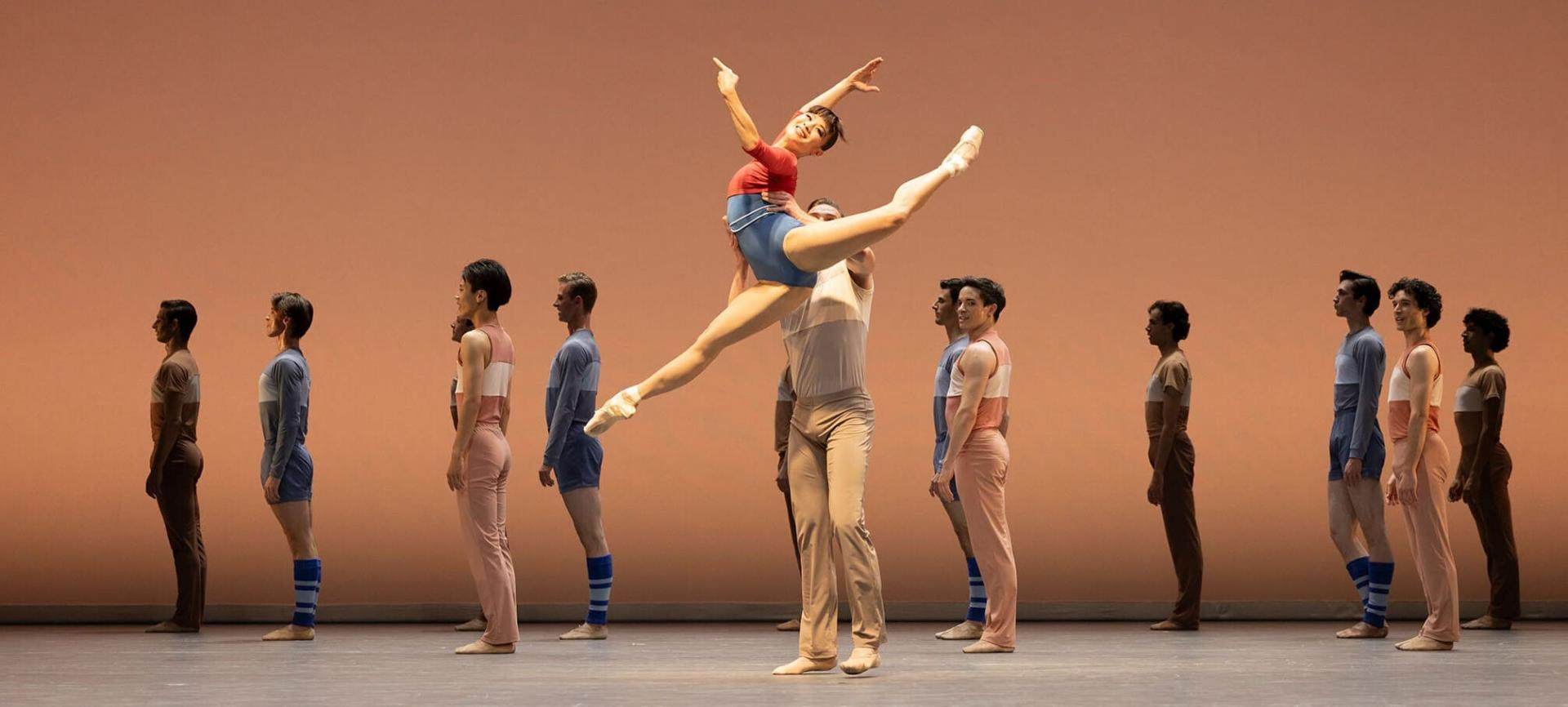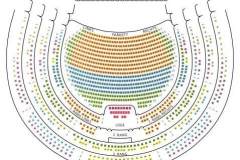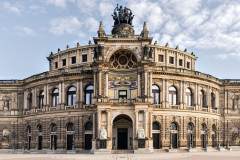Classics
May 2025 | ||||||
|---|---|---|---|---|---|---|
Mo | Tu | We | Th | Fr | Sa | Su |
Classics
George Balanchine · Justin Peck · Twyla Tharp
Multi-part ballet evening
Premiere: June 2, 2024
Three bone fide classic works, all created in New York over a period of eight decades.
Storyline
„Serenade“
The first part of the evening will be George Balanchine's symphonic ballet „Serenade“ (1935), whose title is taken from its music by Peter I. Tchaikovsky, the four-movement Serenade for Strings in C major, op. 48. As a choreography for the students of the School of American Ballet, which Balanchine co-founded, and as his first ballet created in the USA, „Serenade“ still represents a significant point in his oeuvre, whose fascination continues to this day. Although Balanchine’s choreography is not a narrative work, it cannot be considered completely abstract, since it involves certain constellations of relationships and emotional tensions between the dancers. „Serenade“ presents the ensemble in blue costumes with a matching set design and represents a homage to the ›white ballets‹ of French-Russian Romanticism. This impression is also reinforced by the ballerinas in their long, light-colored tulle skirts and pointe shoes.
„Rodeo: Four Dance Episodes“
With „Rodeo: Four Dance Episodes“, Justin Peck created his eighth work for the New York City Ballet as its resident choreographer and artistic advisor. His musical basis is the version for symphony orchestra of the ballet music „Rodeo“, which Aaron Copland had originally composed for American choreographer Agnes de Mille. Copland’s musical style, called „Americana“, often reminds of pastoral sound-landscapes of endless vastness and sometimes incorporates American folk songs too. His 1942 ballet „Rodeo“ belongs to a triad that also includes the dance creations „Billy the Kid“ (1938) and „Appalachian Spring“ (1944). Justin Peck's work divides the »Rodeo« score into four episodes: „The first movement takes on a kinetic, engine-like quality; the second movement elicits recurring weather patterns; the third movement calls to mind the synchronicity illustrated by two birds in flight; and finally, the concluding fourth movement communicates a sense of total vitality, bright fervor, and healthy competition“, the choreographer stated.
„In The Upper Room“
In 1986, US choreographer Twyla Tharp commissioned the minimalist soundscape composer Philip Glass with an orchestral work for a new creation: „In The Upper Room (aka Dancer's Notebook #1-9)“ offers its dancers scope to perform a wide range of physical techniques. In nine vibrant scenes, defined by a powerful movement vocabulary, ballet meets tap dance, boxing and yoga. The variety of steps and a refined sense of time-rhythm demand both body control and fitness on part of the company. This variety is also represented by the multifaceted costume design, which, in the course of the piece, develops a dynamic that matches with Ms Tharp’s style. The sensual component of this choreography is rounded off by the thought-out combination of light and haze effects. Due to its ethereal effect, this dance work has since become a repertoire classic of many international companies. In the 2023/24 season, the international ballet star will present one of her works at the Semperoper for the first time.
Program and cast
Musical Direction: Katharina Müllner
Serenade
Choreography: George Balanchine
Music: Pyotr I. Tchaikovsky
Costumes: Karinska
Lighting: Christoph Schmädicke
Staging: Nanette Glushak
Rodeo: Four Dance Episodes
Choreography: Justin Peck
Music: Aaron Copland
Costumes: Reid & Harriet Design
Lighting: Brandon Stirling Baker
Staging: Michael Breeden, Eric Trope
In the Upper Room
Choreography: Twyla Tharp
Music: Philip Glass
Costumes: Norma Kamali
Lighting: Jennifer Tipton
Staging: Kaitlyn Gilliland, Marcelo Gomes
Semperoper Ballett
Sächsische Staatskapelle Dresden
Project Partners: Sparkassen-Finanzgruppe Sachsen, Ostsächsische Sparkasse Dresden, Sparkassen-Versicherung Sachsen, LBBW
Semperoper Dresden
The Semperoper is the opera house of the Sächsische Staatsoper Dresden (Saxon State Opera) and the concert hall of the Sächsische Staatskapelle Dresden (Saxon State Orchestra). It is also home to the Semperoper ballet. The building is located near the Elbe River in the historic centre of Dresden, Germany.
The opera house was originally built by the architect Gottfried Semper in 1841. After a devastating fire in 1869, the opera house was rebuilt, partly again by Semper, and completed in 1878. The opera house has a long history of premieres, including major works by Richard Wagner and Richard Strauss.
The first opera house at the location of today's Semperoper was built by the architect Gottfried Semper. It opened on 13 April 1841 with an opera by Carl Maria von Weber. The building style itself is debated among many, as it has features that appear in three styles; Early Renaissance and Baroque, with Corinthian style pillars typical of Greek classical revival. Perhaps the most suitable label for this style would be eclecticism, where influences from many styles are used, a practice most common during this period. Nevertheless, the opera building, Semper's first, is regarded as one of the most beautiful European opera houses.

 EN
EN DE
DE IT
IT FR
FR ES
ES RU
RU JP
JP RO
RO
 Seating plan
Seating plan 